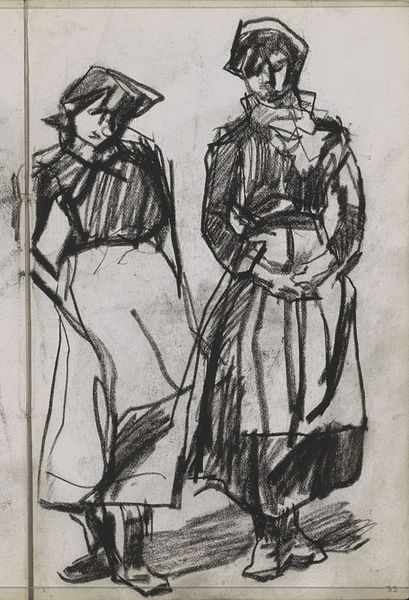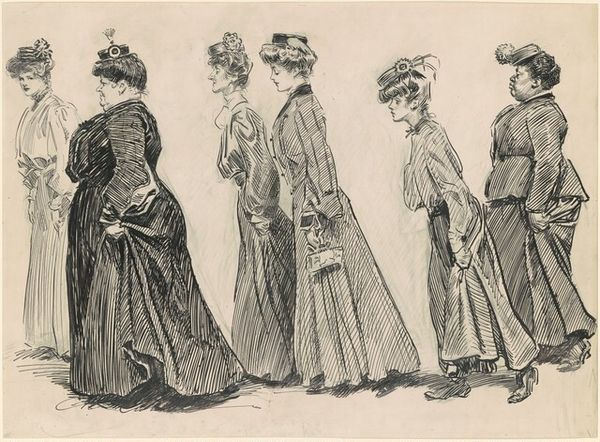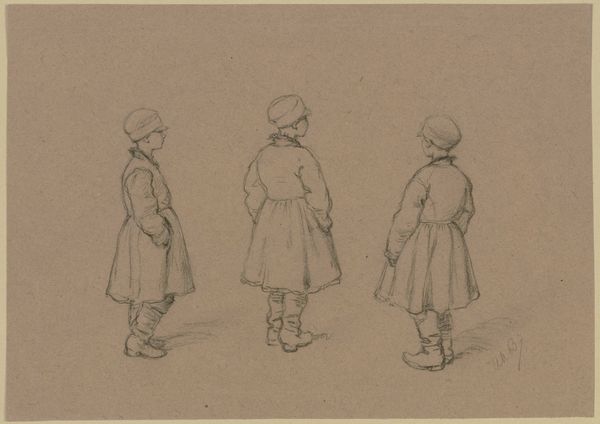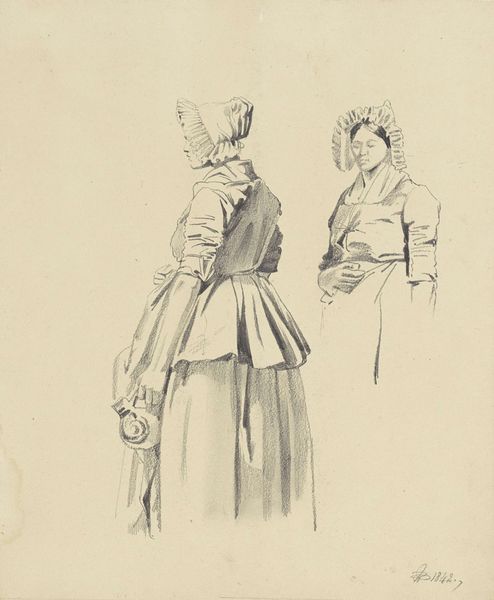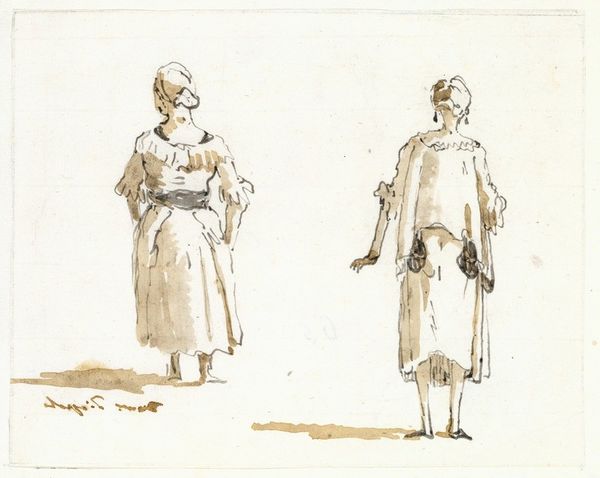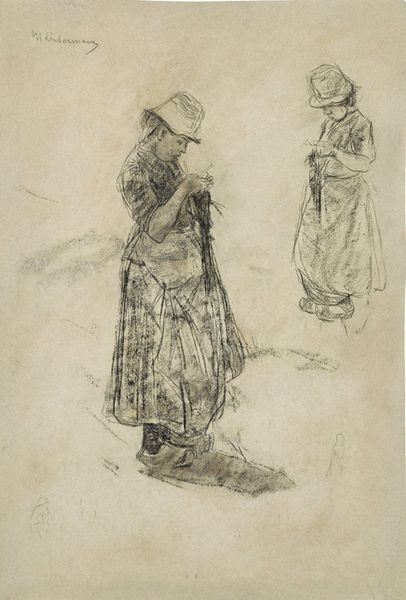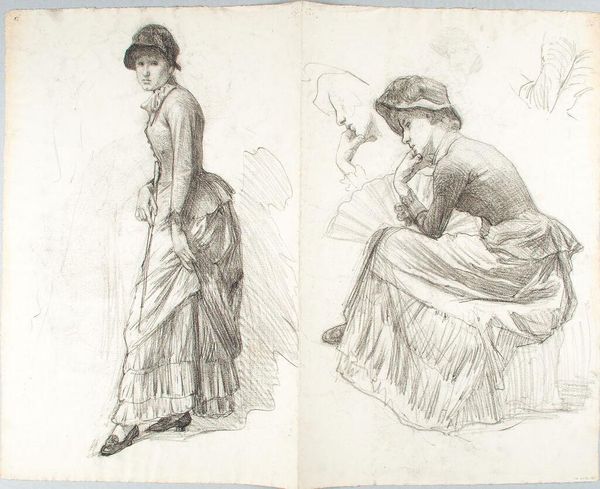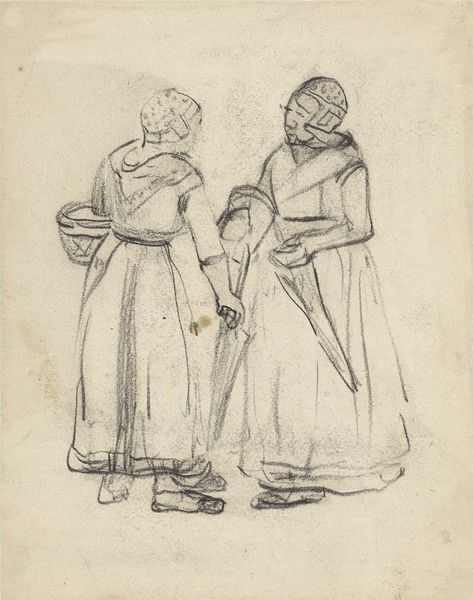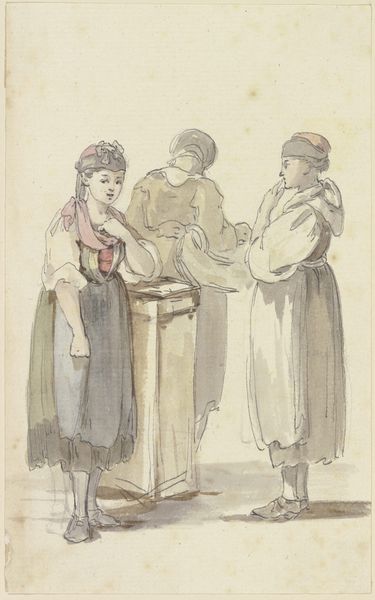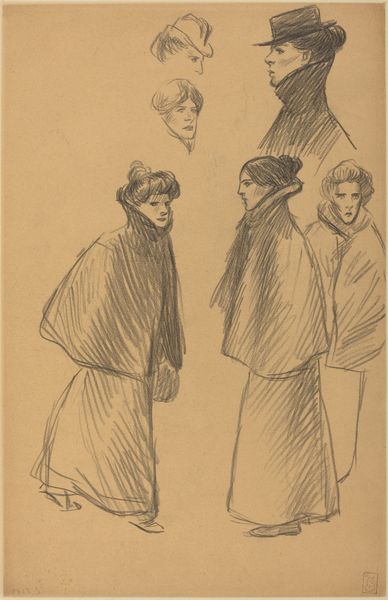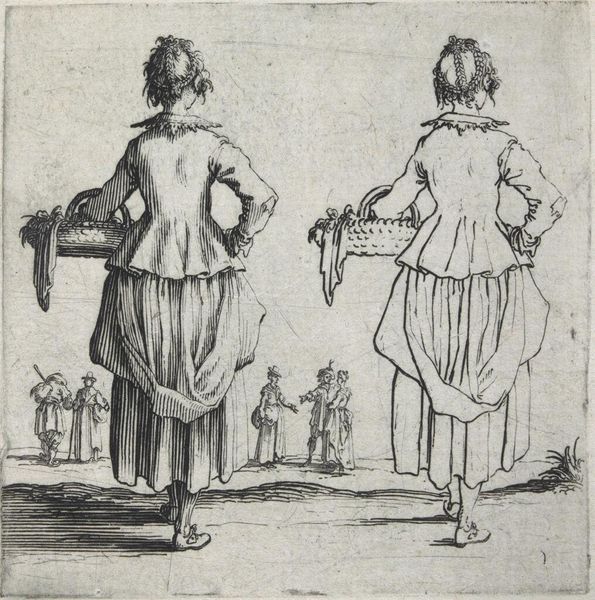
Dimensions: height 305 mm, width 237 mm
Copyright: Rijks Museum: Open Domain
Curator: Johannes Abraham Mondt's "Drie studies van een wandelende dame in mantelkostuum," dating roughly from 1869 to 1941, presents three figures rendered in pencil. The drawing captures a woman in a coat and hat, repeated in slightly varied poses across the page. Editor: The immediacy is what strikes me first. It feels like a glimpse into a private sketchbook, something not quite meant for public consumption, carrying an energy both reserved and candid. Curator: Note how Mondt's quick pencil strokes construct the figures, giving texture and form. The lines are economically employed, suggesting volume and detail rather than painstakingly defining them. This reminds me of impressionist principles, which privilege capturing a fleeting moment and perceptual accuracy. Editor: It's interesting to view these "studies" not simply as technical exercises but also reflections on the burgeoning role of women in public space during this period. These women, equipped with their coats, hats, and canes, occupy the space with quiet assertiveness. Consider what it means for a woman to be "walking" into modernity during the end of the 19th Century and beginning of the 20th Century and how dress codes functioned to dictate where they had access. Curator: An astute observation. Yet I wonder, does Mondt's formal language lend itself to a focus on exterior details instead of more significant societal analysis? Editor: Form and content are not separable in my opinion; there are signs here. Consider the varying lines: darker to communicate a stiff military bearing to then taper in their strokes and reflect that the woman is also fashionable; the quick hatching shows that they move, too. So the sketch is capturing the experience of transition, which speaks more to their subjectivity than external elements. Curator: Perhaps the value here lies in this open invitation to view it in any variety of perspectives, depending on our lens and expectations, since it remains a fleeting trace. Editor: I see now, this sketch is an invitation. To move alongside these figures from over a century ago and also see the contemporary implications of this woman moving and what freedom for them has meant, and still means, for us.
Comments
No comments
Be the first to comment and join the conversation on the ultimate creative platform.
